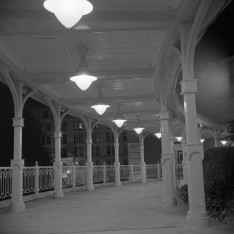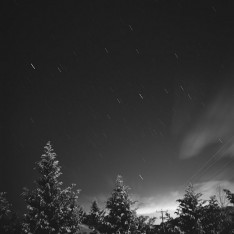 My first two rolls of Ilford‘s HP5+ film have been shot and developed.
My first two rolls of Ilford‘s HP5+ film have been shot and developed.
The film was shot at box speed (400) metered using the ever reliable Gossen Luna Pro F. I developed in Rodinal 1+50 dilution for 11 minutes at 68F. This is the official time recommended by Ilford and also listed in the Massive Dev Chart.
First of all, I’m pretty certain that the development time was too short. Almost all of the negatives came out quite thin. I know my metering was correct, especially so for the incident metered shots which were very consistent in their difference from what I consider normal. I’m reasonably sure that the Yashica’s shutter speeds are in spec, or certainly not out by a stop or more. I haven’t had any trouble with previous rolls of Tri-X, Acros and Ektar run through it. I used all the shutter speeds throughout the roll and counted out some exposures in the 2-4 second range with the shutter set to bulb. Just can’t see all the speeds suddenly being out of whack by the same amount and my counting to be off by the same amount.
Also the edge markings on the film seem to be rather thin-looking.
So next roll I develop I’ll try something else. Possibly 13 minutes with normal agitation (30 seconds at start, 3 inversions every minute).
I also got a reasonable answer on my “which reciprocity adjustments to use” question: the Ilford official adjustments resulted in an overly dense negative, even with everything else on the roll looking thin. The shorter time garnered from testing yielded a negative with tones a lot closer to the other shots on the two rolls. I’m going to stick with those times and throw the datasheet’s recommendations under the bus.
I did notice that the lights in my night shots seem to be very dense despite the underdevelopment. Perhaps this film would respond well to a reduced agitation approach. Perhaps I’m used to Fuji Acros 100’s ridiculous ability to hold onto highlights.
What else? I like what I see so far in terms of detail and grain (supposedly Rodinal and HP5+ are not a match made in heaven, but I’m not seeing any big problem. Then again I’m not pathologically averse to grain either). I’ll be picking up another few rolls of this and refining my development.
 Up to now I’ve been shooting a lot of Fuji Acros 100 and the
Up to now I’ve been shooting a lot of Fuji Acros 100 and the